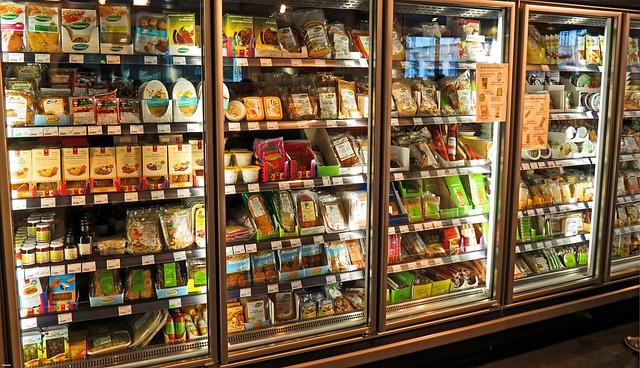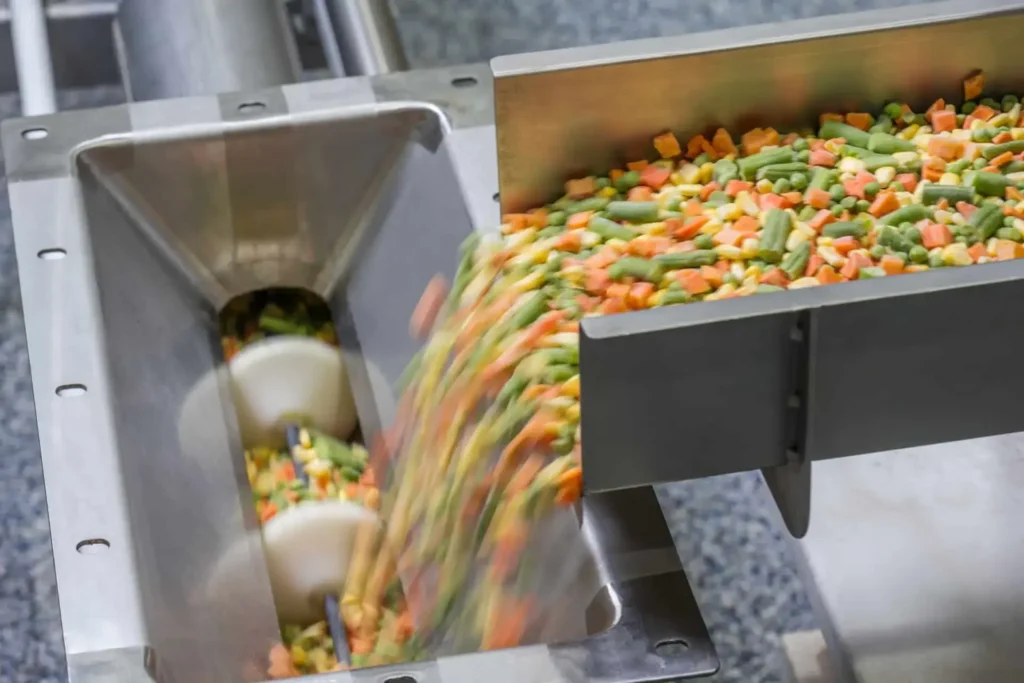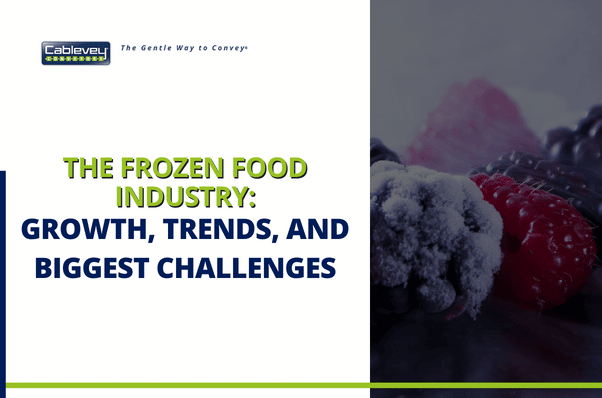The frozen food industry has experienced significant growth, evolving with emerging trends and facing unique challenges. This dynamic sector reflects changing consumer preferences and technological advancements. In this article, we delve into the factors contributing to the industry’s expansion, the latest trends shaping consumer choices, and the major challenges companies face in maintaining quality, sustainability, and market relevance.
The Frozen Food Industry Has Seen a Boost in Recent Years
The COVID-19 pandemic has profoundly affected all aspects of human life. Industries ranging from travel and hospitality to fashion and beauty have been impacted significantly. However, while some have been affected negatively (such as travel and hospitality), certain industries have seen a boost during these turbulent times.
One such sector is the frozen food industry, which has seen significant growth during 2020 and 2021 and looks poised for continued success in the years to come. In this article, we will take a look at the current state of this industry, as well as some of the trends and challenges that it is facing.
Let’s Start From the Basics – What Is Frozen Food?
Frozen food is, quite simply, food that has been preserved by being kept at a temperature below 0°C. This freezing process can be done commercially or in the home, and it is a popular method of food preservation because it helps prolong the shelf life of food significantly.
The purpose of these products is to provide consumers with a convenient way to enjoy fresh food all year round, regardless of the season. Cooking time is also reduced, as frozen food can often be cooked before being frozen. This is a big selling point for busy families who want to enjoy a healthy meal but don’t have the time to prepare everything from scratch.
Most Commonly Used Frozen Food Products
Just like with fresh food, there is a huge range of frozen food products available to consumers, and the industry is constantly striving to come up with new and exciting products. These products can be divided into several different categories according to product type:
- Fruits and vegetables,
- Dairy products,
- Bakery products (such as pizza crusts),
- Meat and seafood products,
- Desserts (ice cream or cakes),
- Convenience food and ready meals.
How Big Is the Frozen Food Industry?
Now, let’s take a look at some numbers to get a better understanding of the size and scope of the frozen food industry. According to a report by Polaris, the global market was valued at USD 252.19 billion in 2021 and is expected to reach USD 389.90 billion by 2030, at a CAGR of 5.1% during the forecast period (2022-2030).
Although Europe is currently the largest market, Polaris predicts that the Asia Pacific will see the highest growth in the coming years due to the increasing demand from countries such as China, India, and Japan.
Out of the products listed in the section above, the fish, meat, and seafood category currently holds the largest market share due to the growing popularity of these products among consumers. However, fruit and vegetables is the fastest-growing category due to the increasing health consciousness of consumers and the increasing availability of these products. Mushrooms, in particular, are seeing a big rise in popularity.
As we can see from the data, the market size is currently large and only expected to grow in the coming years. This provides a great opportunity for those in the industry to capitalize on this growth and continue to innovate to meet consumer demand.

What Are the Drivers and Restraints of the Frozen Food Market?
When we talk about market drivers, we are referring to the factors that are causing the market to grow. There are two main drivers of this market growth. First, busy, fast-paced lifestyles – as mentioned above, one of the main selling points is convenience. With more and more people leading busy lifestyles, there is a growing demand for products that can be quickly and easily prepared. Increased disposable income is the second factor – as people’s incomes grow, they are more likely to spend money on convenience foods.
At the same time, all markets face restraints, and the frozen food market is no different. The main limitation currently affecting the industry is the public perception that frozen food is inferior to fresh food in terms of taste and nutrition. A widely believed myth is that foods stored for longer periods must be of lower quality. This perception is slowly starting to change as consumers become more educated about the benefits of frozen foods and as the industry continues to educate and invest in new technologies that can help improve the taste and nutrition of frozen products.
What Are the Challenges Facing the Frozen Food Industry?
While developing countries such as Latin America, South America, South Africa, and others present an untapped potential for the frozen food industry, several challenges must be addressed to capitalize on this opportunity fully. These challenges include:
- Lack of infrastructure – In many developing countries, the lack of a reliable electricity supply and cold chain storage facilities presents a major challenge to the growth of the frozen food industry.
- High costs – Due to the lack of infrastructure and economies of scale, the costs of producing and distributing frozen food products in developing countries are often much higher than in developed countries. This makes it difficult for companies to compete in these markets.
- Food safety concerns – In many parts of the world, there is a lack of awareness about food safety and hygiene practices. This can lead to issues such as food contamination and spoilage.
Which Are the Top Players in the Global Frozen Food Market?
The global frozen food market is marked by the presence of several prominent players who have a significant impact on market trends and consumer preferences. These companies have not only pioneered numerous innovations in the sector but also contributed substantially to its overall growth and development. Among the top contenders in this competitive landscape, a few stand out due to their size, global reach, and product diversity.
Key players in the global market include:
- Nestle (Switzerland),
- Unilever (United Kingdom),
- Conagra Brands (United States),
- General Mills (United States),
- Lantmannen Unibake International (Denmark),
- Kraft Heinz (United States),
- Grupo Bimbo (Mexico).
These companies represent just a segment of the vast and diverse market. As the industry continues to evolve and expand, driven by changing consumer habits and technological advancements, we can anticipate the emergence of new players.
These newcomers will not only challenge the existing hierarchy but also contribute to the industry’s innovation and growth. The future looks promising, with ample opportunities for both established brands and new entrants to make their mark and cater to the ever-changing needs of consumers globally.

How Will the Market Change in the Next Few Years?
The frozen food market is undergoing a significant transformation, driven by evolving consumer preferences and technological advancements. The shift in consumer behavior is playing a crucial role in this evolution. We wanted to touch on some of the trends currently shaping the frozen food market, which are expected to continue in the next few years. These trends include:
- A move towards healthier options – As consumers become more health-conscious, there is a growing demand for healthier options that are low in calories, fat, and sugar.
- An increase in plant-based options – Another trend that is being driven by health concerns and the rising popularity of the vegan diet is the increasing demand for plant-based options. This includes products such as veggie burgers and meatless chicken nuggets.
- Innovation in packaging and delivery – In order to meet the needs of today’s busy consumers, there is an increasing focus on innovation in packaging and delivery methods. This includes developing new packaging materials that keep food fresh for longer, as well as using novel delivery methods such as drones and robots.
How Can Your Business Stand Out in the Frozen Food Market?
The state of the market as it is now is incredibly promising for businesses in the frozen food industry. However, as we have seen, the market is also highly competitive. It is important to focus on innovation to stand out and increase your market share. This can be done by focusing on product development, packaging, and marketing.
Streamlining and automating your production process with smarter technologies, such as industrial conveyor systems, is one way to reduce your costs and improve your efficiency. This will give your company a competitive edge and help you meet the needs of your customers better.
Frozen food tubular conveyor systems, outstanding conveyor solutions provided by Cablevey Conveyors, are especially well-suited for handling frozen food products. They are designed to minimize product breakage and damage, and they can operate in sub-zero temperatures.

Contact Us to Get the Best Conveyor Technologies on the Market – Cablevey Conveyors Is Here for You
At Cablevey Conveyors, we pride ourselves on offering some of the best conveyor technologies available in the market. Our commitment to innovation, quality, and customer satisfaction sets us apart in the industry. Whether you need a tubular conveying system for food processing or any other industry, we have the expertise in manufacturing conveyor systems that enhance efficiency, maintain product integrity, and adhere to the highest hygiene standards.
Our team is ready to provide you with customized conveyor solutions tailored to your specific needs. We understand the critical role conveyor engineering plays in your operations, and we’re here to ensure you get the best. Contact us to explore our range of conveyor technologies and find out how we can help you with conveyor installation and optimizing your production process.
FAQ
What Is Frozen Food and Why Is It Popular?
Frozen foods are preserved at temperatures below 0°C, extending their shelf life significantly. This method is popular because it allows consumers to enjoy fresh, nutritious food year-round, with the added convenience of reduced cooking times. The appeal of frozen foods lies in its ability to cater to busy lifestyles, offering a practical solution for healthy meals without the time investment of preparing everything from scratch.
What Are the Most Common Types of Frozen Food Products?
The market offers a diverse range of products, including fruits and vegetables, dairy products, meat and seafood products, bakery items like pizzas, desserts such as ice cream and cakes, and convenient ready meals. This variety caters to different dietary preferences and needs, making frozen food a versatile choice for consumers.
What Factors Are Driving the Growth of the Frozen Food Market?
Key factors driving the market’s growth include busy lifestyles and increasing disposable incomes, leading to a higher demand for convenient foods. Additionally, growing health consciousness is prompting the industry to innovate healthier frozen food choices with lower calories, fat, and sugar and an increase in plant-based options driven by dietary shifts towards veganism.
What Challenges Does the Frozen Food Industry Face?
Despite its growth, this industry faces challenges, especially in developing countries. These include infrastructural issues like unreliable electricity and inadequate cold storage facilities, higher production and distribution costs, and food safety concerns. Overcoming these challenges is crucial for tapping into the potential of these emerging markets.






